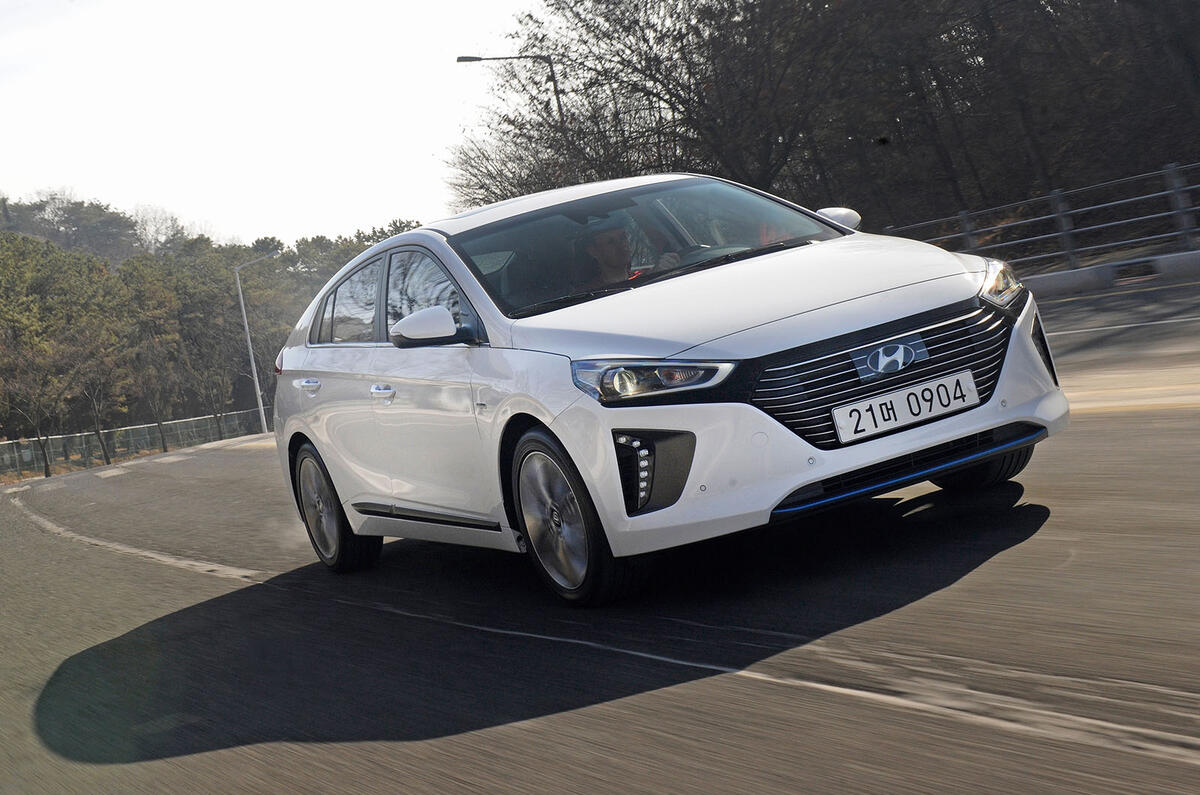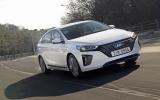What is it?
This is Hyundai’s first mainstream hybrid car, which is part of Hyundai’s aim to have 22 ‘eco-friendly’ cars on sale by 2020: 12 hybrids, six plug-in hybrids, two electric vehicles and two fuel cell vehicles.
Interestingly, the Ioniq will account for three of these new models. As well as a conventional hybrid model, the car will also be sold as a plug-in hybrid and a pure EV.
The core of the Ioniq’s engineering is to keep it simple, and it’s certainly rather simpler than Toyota’s Toyota Prius. This simplicity is also intended to keep the costs down, so this hybrid should arrive in showrooms with a price that is not much more than a modern diesel car with an EU6-rated engine.
Hyundai says it also wanted to fix a couple of other issues that have been criticised on hybrids such as the Prius and Honda Insight. Most important was eliminating the droning and ‘elastic’ sense of acceleration associated with CVT hybrid transmissions. Hyundai is also trying to engender a degree of driving pleasure and to try to make the car as refined as possible.
The first money-saving move was to build the Ioniq on a modified version of the new platform underpinning the new Vauxhall Astra-sized Elantra model. As well as getting a bespoke multi-link rear axle (and having much of the suspension components made of aluminium), the rear half of the floorpan is modified to incorporate three different battery capacities.
This hybrid version gets a small 1.5kWh battery that is slotted into the same space under the rear seats as the fuel tank. The latter is squeezed down to a 45-litre capacity.
Work on refinement included upgraded insulation behind the dash and in the A and B-pillars, thicker window glass and a sound-deadening film on the windscreen.
The plug-in hybrid and EV versions of the Ioniq get progressively bigger battery packs that are squeezed under the boot floor and, in the EV, also replace the fuel tank. There’s no news on the size of these battery packs, but Hyundai is estimating an EV-only range of 32 miles for the PHEV and 155 miles for the EV.
The new hybrid transmission also has simplicity on its side. Hyundai says it is the first company to build a DSG gearbox that shifts quickly enough to be used in conjunction with a petrol engine and the electric motor. The six-speed ’box uses dry clutches, gets Sport and Eco settings and is said to be 95% efficient in transferring the engine’s power.
The petrol engine is a development of the company’s existing Kappa petrol family, which is said to be 40% thermally efficient - unusually high for a petrol motor and matching the latest Toyota petrol units for theoretical efficiency.
The exterior styling deliberately avoids Prius-like individuality. It’s quite modestly sized - not dissimilar to the Mk2 Honda Insight - and there are a few obvious ‘eco car’ markers such as the large, blank grille, sizeable LED running lights and the twin-window hatchback.
The interior is similarly toned down and restrained. It’s dominated by the 7.0in dash screen and neatly aligned rows of switches for the audio, navigation and climate control systems. There’s a big, useful cubby space at the base of the centre console that has twin power sockets and an induction charging pad for mobile phones. There’s even a big slot moulded by the centre armrest for a tablet computer.














































Join the debate
Add your comment
Should I buy one ?
Looking forward to go and see it in Geneva next month ! Even if I doubt about the simplicity of the transmission and driving compared to the Prius!
Good point, Clarkey
Having said all that, I really like this car and have had good experience with Hyundai / Kia reliability in the past. Here's hoping...
Will do as well as the Prius